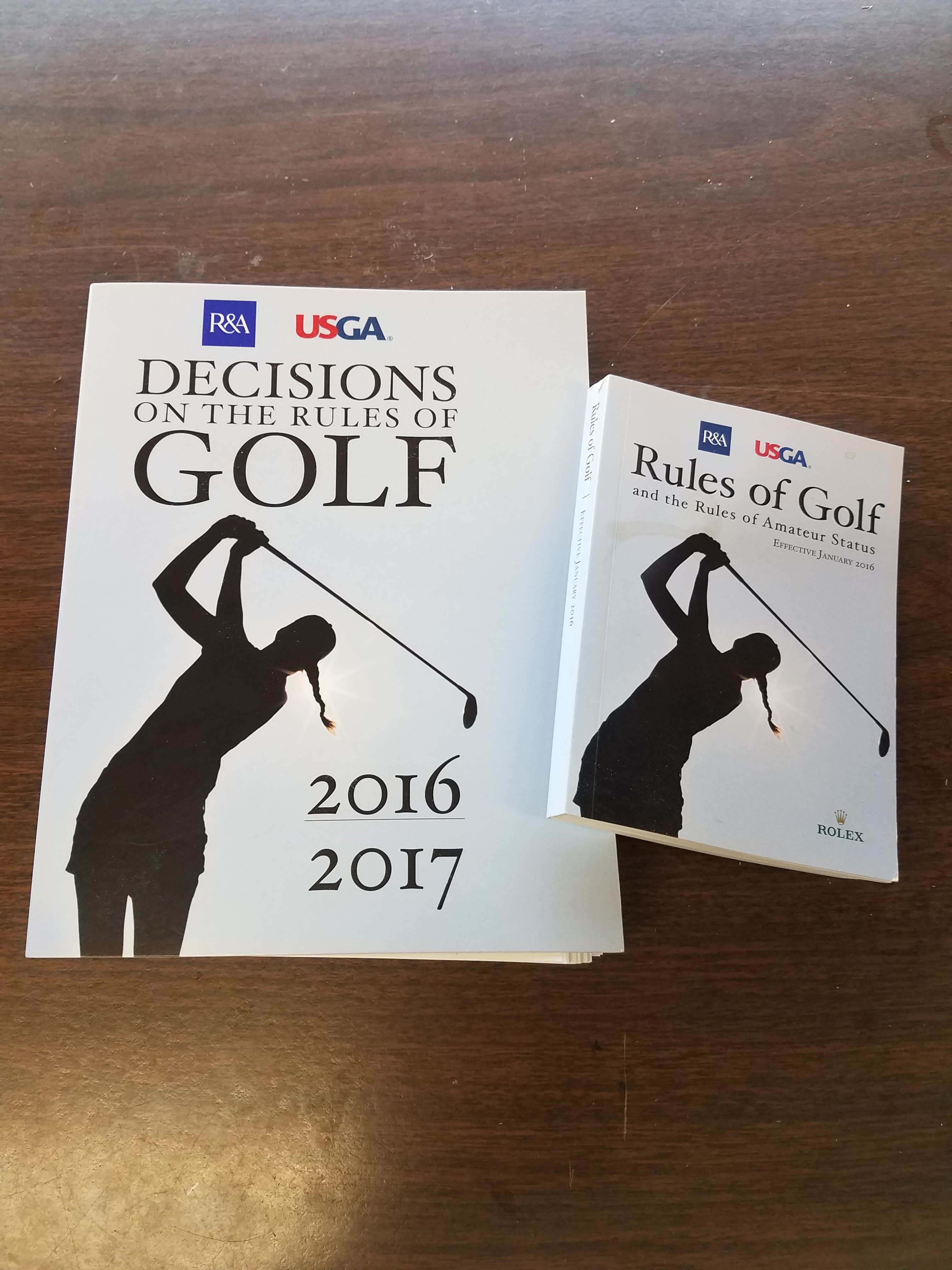By Mark Wehrman EBS Contributor
The United States Golf Association quietly announced in March some major changes coming to the rules of golf to modernize the game. These “test rules” are proposed to go in to affect in 2019 taking into account feedback from the golfing public. In making their announcement they have solicited feedback from anyone with an opinion. Before talking about some of the changes that are coming down the pipeline, I suggest to all golfers to make your ideas and opinions heard by the USGA.
The following are examples of just some of the proposed rules changes, according to the “R&A / USGA Modernization Initiative”:
Putting green
Leaving the flagstick in the hole: No penalty if your ball hits the unattended flagstick in the hole, including when you play your ball from the putting green. If your ball deflects off the flagstick and is not holed, you must play it as it lies.
Repairing damage: You may repair all damage on the putting green—including spike marks and other shoe damage—other than natural imperfections or aeration holes.
Touching your line of putt: No penalty for merely touching your line of putt, but you must not improve your line of putt beyond the allowed repair.
Your ball or ball-marker moves: No penalty if you, or your opponent in match play, accidentally move your ball or ball-marker on the putting green. You must replace your ball or ball-marker on the original spot (which, if you don’t know it, you must estimate).
Your ball moves after you had lifted and replaced it: If your ball on the putting green is moved by anyone or anything—including the wind—after you already had lifted and replaced it, you must replace your ball to its original spot.
Bunkers
Moving loose impediments: When your ball is in a bunker, you may move loose impediments in the bunker.
Touching the sand: When your ball is in a bunker, no penalty for touching the sand in the bunker with your hand, club or other object, except:
– You must not deliberately touch the sand with your hand or a club, rake or other object to test the bunker’s condition, and
– You must not touch the sand with your club right behind or in front of your ball, in making your backswing for your stroke or in making a practice swing.
Water hazards (to be known as “penalty areas”)
Moving loose impediments and touching the ground: When your ball is in a water hazard, you may move loose impediments and touch the water or the ground in the water hazard with your hand or club (such as in grounding your club or taking practice swings).
Searching for ball
Time for search: Your ball is lost if you don’t find or identify it in three minutes after you or your caddie begin looking for it.
Accidentally moving your ball: No penalty if you or your caddie accidentally moves your ball during search. You must estimate the ball’s original spot and replace it on that spot.
Taking relief when a rule requires you to drop a ball
How to drop your ball:
– You must hold your ball above the ground without it touching any growing thing, or natural or artificial object, and let go of your ball so that it falls through the air before coming to rest.
– To avoid doubt whether you did this right, it’s recommended that you drop the ball from at least 1 inch above the ground (including any growing thing, or natural or artificial object).
Finding your relief area: You must drop the ball in and play it from a relief area measured from the reference point or line given in the rule under which you are taking relief:
– When current rules tell you to drop within one club-length of the nearest point of relief—such as immovable obstructions, ground under repair, etc.—your relief area is 20 inches (50.8 centimeters) from the nearest point of relief, no closer to the hole.
– When current rules tell you to drop as near as possible to a spot—such as stroke and distance relief, embedded ball, ball on or in movable obstruction, etc.—your relief area is 20 inches (50.8 centimeters) from that spot, no closer to the hole.
– When current rules tell you to drop within two club-lengths—lateral water hazard or an unplayable ball—your relief area is 80 inches (203.2 centimeters) from the reference point (that is, where your ball entered the water hazard or was unplayable), no closer to the hole.
– When current rules tell you to drop back on a line—such as behind a water hazard or behind the spot of an unplayable ball—your relief area is 20 inches (50.8 centimeters) on either side of the estimated line from the hole through the designated point (such as where your ball entered the water hazard or was unplayable).
Where to drop and play your ball:
– You must drop your ball in and play it from the designated relief area.
– If your dropped ball comes to rest outside the relief area, you must lift it and drop it again. There is no set limit to the number of times to re-drop your ball, and if necessary you should try to drop it in different parts of the relief area.
– If your dropped ball will not stay in the relief area after several tries and it is reasonable to conclude that it will not stay in the relief area no matter where you drop it within that area or how you drop it—including dropping it from as low a height as allowed—you may place the ball at any spot in the relief area.
Ball to use in taking relief: Whenever you take relief by dropping a ball—whether free relief or penalty relief—you may either use your original ball or substitute another ball.
Since the USGA’s initial announcement this list has been getting longer. In my opinion, the list could grow even more. More specifically, I’d like to see the out of bounds and lost ball penalty be changed to mirror the penalty for losing a ball in a lateral water hazard. This would mean instead of having to replay the shot you would be able to drop closest to where the ball left the course boundary or where it appeared to be lost.
If you would like to offer your opinion and suggestions to the USGA I encourage you to do so by emailing them at rules@usga.org.
Mark Wehrman is the PGA Head Professional at the Big Sky Resort Golf Course.














